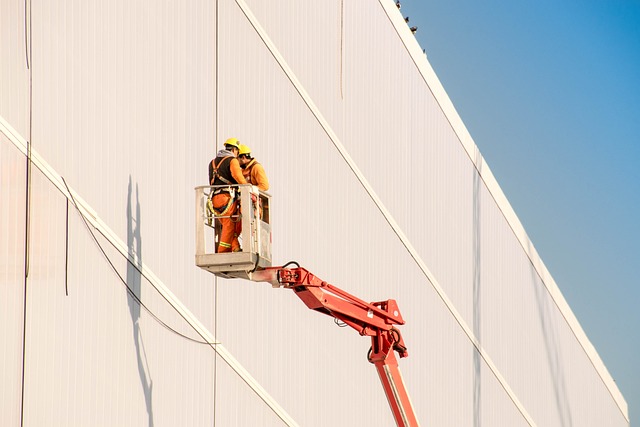Non-Destructive Excavation (NDE), utilizing advanced vacuum techniques, is a game-changer in urban construction. This method safely verifies underground utilities like water, gas, and cables without damage, minimizing risk and environmental impact. By offering precise mapping and real-time data, NDE enhances efficiency, worker safety, and long-term utility reliability, making it ideal for complex urban projects. Case studies highlight its success in preserving historical sites and minimizing disruption during critical construction tasks.
In the realm of utility verification, where precision meets safety, non-destructive excavation (NDE) stands as a game-changer. This innovative technique offers a bustling alternative to traditional methods, ensuring accurate identification and location of underground utilities without causing damage. Understanding NDE is pivotal for professionals navigating the complex landscape of urban construction projects. This article delves into the benefits, expert techniques, and real-world applications of vacuum excavation, illuminating why it’s become an indispensable tool in today’s digital era.
Understanding Non-Destructive Excavation: The Safe and Accurate Method
Non-Destructive Excavation (NDE) is a safe and accurate method used to verify utilities beneath the ground without causing damage. This technique is becoming increasingly important as construction projects grow more complex, with intricate utility networks beneath urban landscapes. By employing advanced equipment and skilled technicians, NDE allows for precise mapping of underground infrastructure, ensuring that digging operations do not disrupt critical services like water, gas, electricity, or telecommunications.
Compared to traditional excavation methods, NDE offers significant advantages. It minimizes the risk of damaging buried utilities, thus preventing costly repairs and service interruptions. This method also reduces environmental impact by preserving the integrity of underground assets and minimizing site disturbance. With real-time data acquisition and detailed mapping capabilities, NDE provides accurate information for informed decision-making during construction projects, enhancing overall efficiency and safety.
Benefits of Vacuum Excavation for Utility Verification
Vacuum excavation, also known as non-destructive excavation, offers a multitude of benefits for utility verification processes. Unlike traditional digging methods, this advanced technique allows for precise and safe removal of soil or debris without causing damage to buried utilities like pipes, cables, or wires. By employing powerful vacuums, professionals can swiftly expose underground infrastructure, enabling thorough inspection and accurate mapping.
This non-invasive approach ensures the integrity of vital services remains intact, reducing the risk of costly accidents or service interruptions. It’s particularly advantageous in densely populated urban areas where traditional excavation methods are impractical and dangerous. Vacuum excavation facilitates efficient project completion, enhances safety for workers and nearby residents, and promotes long-term utility reliability.
How Expert Techniques Enhance Precision and Efficiency
Expert vacuum excavation techniques are transforming the way utility verification is conducted, offering a non-destructive approach that enhances precision and efficiency. By employing advanced equipment and specialized training, professionals can accurately locate and map underground utilities with minimal disruption to the surface. This method eliminates the risk of damaging critical infrastructure during construction or maintenance projects, reducing costs and potential safety hazards.
The precision afforded by expert vacuum excavation allows for precise identification and documentation of utility lines, pipes, and cables. This level of detail ensures that construction teams have accurate, up-to-date information, minimizing the chances of accidental damage. Furthermore, the efficiency gains are significant; non-destructive excavation can often be completed faster than traditional methods, allowing projects to stay on schedule while maintaining high safety standards.
Case Studies: Real-World Applications and Success Stories
In the realm of utility verification, where precision and safety are paramount, vacuum excavation has emerged as a game-changer. This non-destructive excavation technique has been successfully employed in various real-world applications, showcasing its effectiveness and versatility. For instance, in urban settings, where navigating beneath bustling streets is a challenge, vacuum excavation allows for accurate mapping of underground utilities without causing disruptions. This method has been instrumental in major cities, ensuring safe construction projects and minimizing the hassle associated with traditional excavation methods.
Case studies highlight the success of vacuum excavation in diverse scenarios. In one notable instance, a construction team utilized this technology to verify the location of underground pipes and cables before initiating a road expansion project. The non-invasive nature of vacuum excavation ensured that critical utilities remained intact, preventing potential disasters. Similarly, in a recent renovation project, a historical building’s foundation was carefully explored using vacuum excavation, allowing architects to make informed decisions without damaging irreplaceable artifacts, thus preserving the site’s historical tapestry.
Non-destructive excavation (NDE) using vacuum excavation techniques has emerged as a game-changer in utility verification. By employing expert methods, professionals can now achieve unprecedented levels of precision and efficiency, ensuring safe and accurate identification of underground utilities. The benefits are clear: reduced damage risks, faster project turnaround times, and minimal site disruptions. Real-world case studies highlight successful applications, demonstrating the reliability and versatility of this technology in various industries. As the demand for precise and safe utility location continues to grow, vacuum excavation and expert NDE techniques will undoubtedly play a crucial role in shaping the future of infrastructure development.
